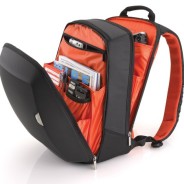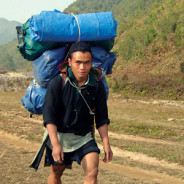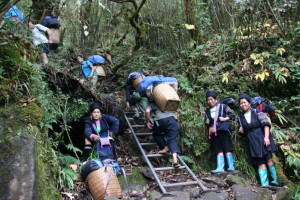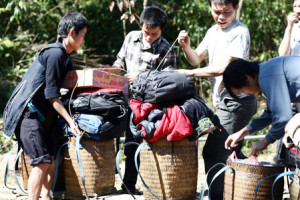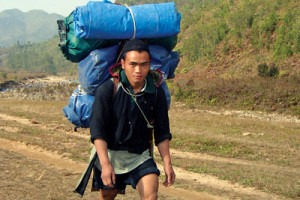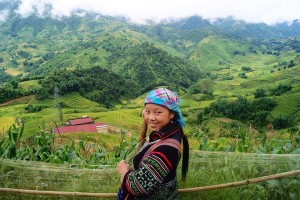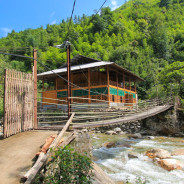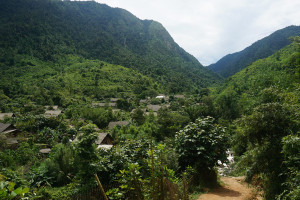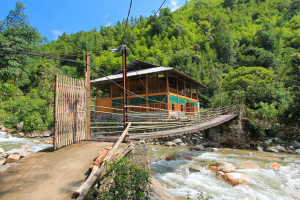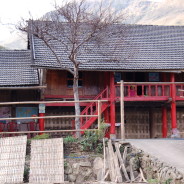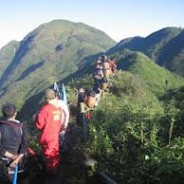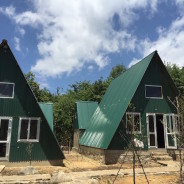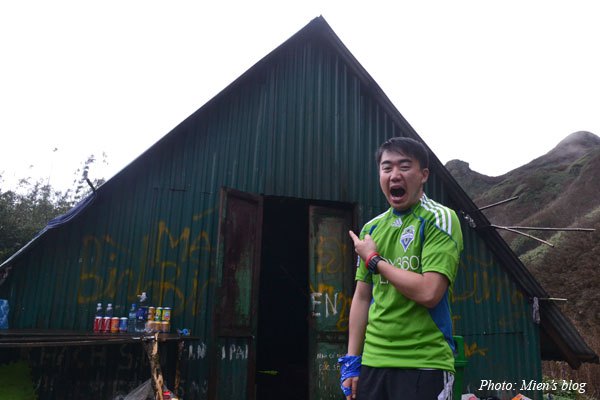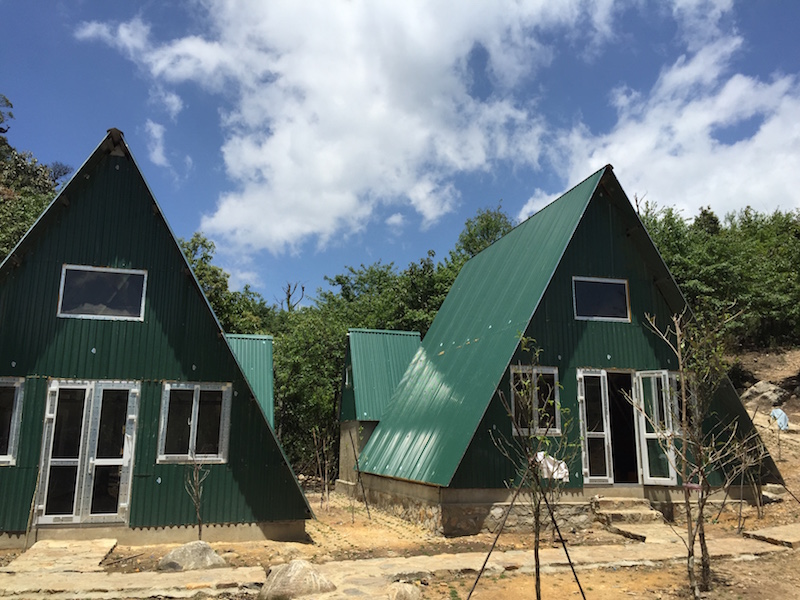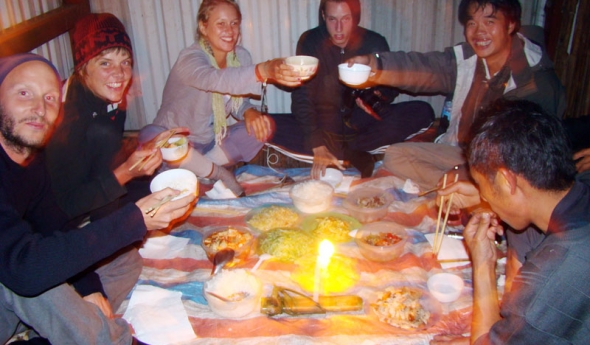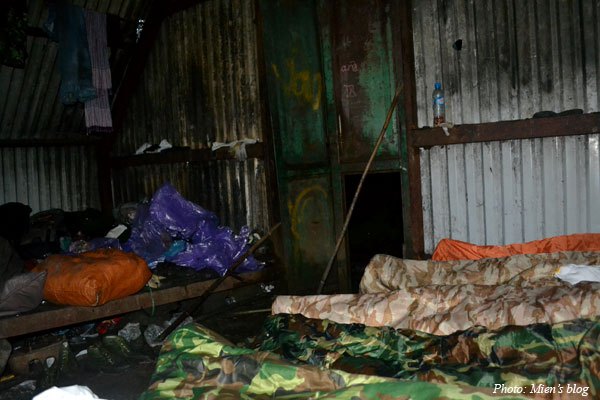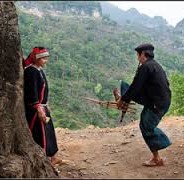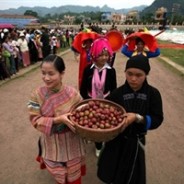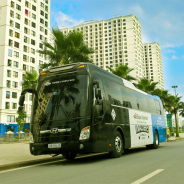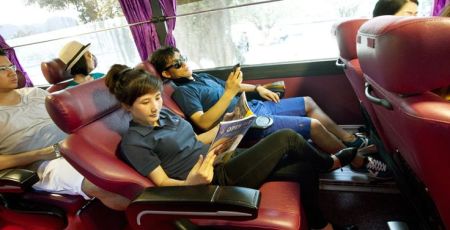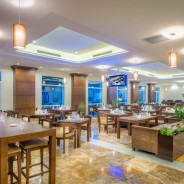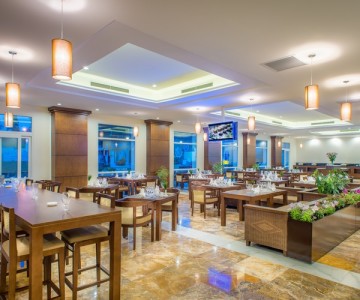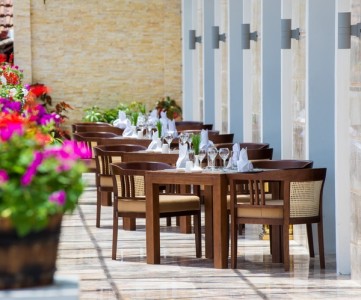Travel Blog
Sapa- What to bring
Sapa – What to Bring
Bring as little as possible but bring everything you need. Travelling light is much less of a hassle, so do not bring things you can do without.
Thanks to its geographic condition, Sapa has one of the most favourable climates in Vietnam. The temperature remains stably cool throughout the year though winter may see more severe changes, with frost and even snow (mostly from mid-December to mid-January).
Trying to predict the weather in Sapa is almost impossible. However, here is our best attempt:
Sapa weather is characterized by sub-tropical climate. However, as a result of the high latitude, weather in Sapa is cool all year round. In summer, Sapa does not suffer the harsh heat like that in coastal plains. Temperature in summer fluctuates from 10 – 18 °C at night time and 20 – 32°C during the day. When the sun shines it can be harsh and even on cloudy days, expect to need sun protection. Rain and fog is possible throughout the year.
In winter, Sapa Town is often blanketed by fog and cold air. Temperature may fall to below zero Celsius.
Luggage and bags: Most hotels in Sapa have temporary room for trekkers to wash up on arrival or departing from/to Hanoi. Most trekkers leave their main luggage in the room and take a lighter backpack for treks and homestays. A day pack to bring on your treks is a good idea. These can be bought in Sapa. ETHOS can store luggage securely should you require.
Clothing/Shoes/Weather Gear: Bring clothes to suit the local weather. Always keep your spare clothes in a watertight bag to ensure they stay dry if there is a sudden downpour. The Sapa climate is totally unlike the rest of Vietnam. Essential items to have for the trek are some layers of warm & light clothing (morning can be cold but get pretty warm during the day as you trek). A pair of sturdy trekking shoes is essential. In January to March it can be quite cold, foggy and rainy. A fleece and raincoat/poncho is advisable. These items are available in Sapa at good prices.
Photo Equipment: Bring your camera. Any camera will do. You will regret it if not bringing one!
Recommended Kit list for homestays:
Clothing:
Long-Sleeved Shirt / T-Shirt Yes
Fleece for evenings Yes
Trousers (Such As Lightweight Cargo Trousers, Avoid Jeans) Yes
Shorts Optional
Swimwear Optional
Lightweight Water & Wind Proof (Jacket & Trousers) Yes
Walking Shoes (Sturdy, with good grip) Yes
Sun Hat Yes
+++
Hygiene:
Toothbrush & Toothpaste: Yes
Travel Towel Yes
+++
Health
Insect Repellent Recommended
Sun Protection: Yes
Travel Insurance: Yes
Ear Plugs & Eye Mask Optional
For our Mountain Riders motorbike trips, long sleeves, long trousers and strong shoes are essential.
How many porters for the trek to Fansipan
A common question is that how many H’mong porters to assist you in the tour to Fansipan Mount.
The Answer from Sapa Travel is that the ratio should be 1:2 for porters/passengers. If your group is 2 pax, you need one porter to carry the food. If you are 10 trekkers, we will have 5 H’mong porters to help you to trek to the peak.
Don’t ask for more porters to carry to luggage. Just bring with you the light backpack.
The Hmong are a proud people and utilising them in a way you are proposing is something we are not aligned to as an organisation that wants to promote social equality and positive cultural exchanges.
- hmong porters
- h’mong porters
- porters
- sapa guide
The village of Nam Cang in Sapa with home stay for travellers
Nam Cang commune is the most remote region of Sapa district, situated 36 km from Sapa town. The village is inhabited by the Red Dao & Black Hmong minority people. The commune includes 267 households with round 1,578 persons. Before year 2000, nearly 80% of households were in hunger and poverty and over 70% of the population were illiterate, but due to a local development plan the and investments in education and farming the population is now living under much better conditions however still poor.
As part of the development strategy the growth of cardamom was initially a pilot project in two households in the commune. But as the result with high economic outcome quickly change the numbers of farmers. Now, Nam Cang farmers grow around 600 hectares of cardamom deep in the forest with an important income in return. But still the biggest croup is rice, whish is somehow the foundation of all livelihood in the mountainous area.
During your stay you are welcome to participate in daily traditional activities of Nam Cang people: rice planting or harvesting, fishing, archery, silver smith, bamboo paper making.
Nowaday, the Topas Travel has built a community-based home stay for travellers. It is called Nam Cang Riverside Lodge. Located deep in the remote Sapa Valley with a beautiful river running in front of the lodge and green forest just behind you don’t find a better location for staying overnight in an old traditional minority village, in the heart of the Vietnamese mountains. This new lodge is built and owned by a Red Dao minority family and operated in partnership with Sapa Travel and opened in the end of 2013.
The area is brand new to visitors so prepare to whiteness the real and remote Vietnam when we go beyond the normal tourist routes, the surprised but friendly looks of local minority people, the children who swim in the river next to your lodge and to be welcomed to private homes as the local mountainous hospitality is unique.
We hope you would like to share our interest in unique experiences and welcome you a remote stay but in comfortable rooms combined with good food and service.
To book the package to Nam Cang Home Stay, contact our travel expert, Mr. Tran Quoc Long
Email: longquoctran@hotmail.com or Sapa Travel Website
Home Stay service in Sapa
Sapa Travel can arrange two, three, and some four day treks with home stays, these are a great way to see the beautiful Sapa Valley and get further from the Sapa Town. Homestays are a type of Inn which is normally run by Giay families down in the valley. When you choose to stay the night at a homestay you wake up already in the valley, which enables you to explore more of the scenery. The guests share one big loft room, on the second floor of a traditional house. The host and their family stay in a separate part of the house. There are no private bedrooms in the homestays. There are hot showers, western standard toilets, beds and tasty traditional food. The homestays are clean and safe.
Where is the home stay:
– In Ta Van Village
– In Ban Khoang village
– In Ban Ho village
– In Ta Phin village
What to bring when trekking Fansipan
Fansipan is branded “the Roof of Indochina” at the height of 3,143m; Fansipan is to be approved as one of the very few eco-tourist spots of Vietnam, with about 2,024 floral varieties and 327 faunal species. The climb is rough, wet and cold, but the views are rewarding if the weather is good. The top is accessible year-round to anyone who is in good shape and properly equipped. No ropes or technical climbing skills are needed, just endurance.Trekking time is 5 – 8 hours per day.
Equipment that you should bring
Besides your good health, the only thing you should bring yourself is a pair of good walking-boots, or another kind of solid foot-wear. You should have tried them out beforehand, and know that you can walk in them all through the day !
Essentials:
– Good hiking shoes (should be soft, well fitted and anti-slippery)
– 2 pairs of thick socks ( for use in the walking-boots)Sandals or light footwear ( for use in the evening )
– Sun-cream (with a high factor ; 10-20 )
-Mosquito repellent
-Hat or cap, with a shade
-Bathing suit
-Medicine for your own use (fever, bad stomach etc.)
– Warm jacket and pullover (expected to be very cold), preferable with head cover
– Rain coat (big enough to cover you backpack as well), cap, glasses
– Flash light
– Well-fitted gloves to help grab while trekking.
– First aid kit (aspirin, anti-biotic, salon pas, healing tape, energy pills…)
– Personal hygiene stuffs
-Towel
-Toilet requisitesOptionals:
– Sleeping bag (otherwise will be provided on spot)
– Insect spray (not really necessary in this season)
– Protectors for knees and ankles- Whistle (to alert in case of emergencies)
Additional tips:
– All belongings should be compact, light and just sufficient for the trek and to avoid unnecessary burden
– Clothing should be loose to make it easy for long treks
– Always stick to the group or local porters in case of assistance, don’t deviate.
– Keep a good stable pace, no need to rush in any case. If you are ahead of the group,
slow down and wait for the company.
– Always provide yourself enough energy from the meals, particularly breakfast.
See the package for trekking Fansipan with Sapa Travel
Best time to trek Fansipan
Trekking up to the top of the highest mount to hug that triangle metal piece saying “Fansipan 3,143m” has become a long time tradition among young trekker. And obviously, Fansipan is also a kind of tourist attraction since it is very close to Sapa, a famous destination for tourists in the North of Vietnam, and a few adventurous and athletic travelers love to combine their Sapa trip with this Fansipan Mount trekking.
Best time to do this whole trekking thing is April and May when the weather is good, not cold (and especially) not rainy, and you will also have a clear view of the beautiful valley with flowers in bloom.
A common question from the trekker is that how is the campsite or the tent when overnight in Fansipan
This is the camp at the height of 2,800m where the trekkers have dinner and spend an oh-so-cold night after 6.5 hours of climbing. It is quite dirty, especially on a rainy day
Actually the view from the camp will be very nice if it is not rainy or too foggy. And in fact in dry weather you can even do camp fire here.
Inside the tin house at night. The hole on the door keeps the winds blowing in all night. It is quite crowded in the camp at night.
Khau Vai love market festival
Thousands of domestic and international tourists gathered for the 2015 Khau Vai Love Market Culture-Tourism Week, which kicked off on May 13th in Meo Vac district of the northern mountainous province of Ha Giang.
The week, which will run through May 16th, features a wide variety of activities including the northernmost beauty contest, cow fighting festivals, horse races, traditional dish exhibitions, and incense offerings at two temples in Khau Vai commune.
Vice Chairman of the district People’s Committee Tran Kim Ngoc, who is also head of the organising board, said the week aims to preserve and uphold the traditional ethnic minority culture in the province.
The Khau Vai Love Market has its origins in a legend about a couple who were deeply in love but were forbidden to be together because they hailed from differed ethnic groups. The two promised to meet once every year in Khau Vai on the 27th of the third lunar month.
The “Phong Luu” market of Son Vi commune is also a highlight of the event, drawing crowds of local residents and neighbouring Chinese people to join and enjoy the event’s art performances and games, according to Ngoc.
During the event, tourism service quality, social order and traffic safety have been ensured to serve tourists, he added.
The century-old festival, which is held annually in the third lunar month, is a popular meeting place for ethnic groups in the locality, particularly those in love./.
USEFUL LINKS
Bac Ha plum tree gardens
People from the south – especially big cities like Ho Chi Minh City and Can Tho – think of plums as a Hanoi specialty. But in reality they’re grown on Bac Ha Plateau, 340km from the capital.
Plums in Bac Ha, called Tam Hoa plums, are different from those in other regions. Bac Ha’s plums are greenish-red, while those of Lang Son province are pink.
Out of all of Vietnam’s different plums, most say Bac Ha’s are the tastiest because they’re so sweet and have small pits. The region is called the White Plateau because it’s home to more than 1,000ha of plum trees. It’s the northwest region’s biggest plum-growing area.
Tam Hoa plum farming has helped thousands of ethnic minority households in Bac Ha district in Lao Cai province escape poverty. Bac Ha is home to the Mong, Nung, Tay and Phu La ethnic minority groups.
Plum season from late May is prime tourist season in Bac Ha. In recent years it has lured a huge number of foreign and domestic visitors
USEFUL LINKS
About Sapa Travel
Sapa Express Bus information
Sapa Express Bus
The bus journey is a four and a half hour trip from Hanoi to Sapa via the brand new Hanoi – Lao Cai highway giving you the unique opportunity to immerse yourself in the beautiful landscape of the mountainous area of Northwest Vietnam. The bus accommodates up to 29 passengers with its luxury service including air-conditioning, Wi-Fi, bus attendant, complimentary bottle of water, comfortable blanket and pillow and free tea, coffee and candy at the pickup point.
Detailed information:
Bus brand name: Universe Limousine 29 seats
Bus departs from Hanoi at 7:00 am and arrives in Sapa at 12:00 pm
Bus departs from Sapa at 4:00 pm and arrives in Hanoi at 9:00 pm
Ticket price: 378,000 VND
Meals onboard are not included in the ticket.
Pick up/ Drop off in Hanoi at: 12 Ly Thai To Street, Hoan Kiem District, Hanoi.
Pick up/ Drop off in Sapa at: 003 Fanxipan Street, Sapa Town, Lao Cai
BOOKING: please send the request to Sapa Travel at info@travelsapa.com
Finding a luxury restaurant in Sapa
Sapa Travel recommend the following luxury restaurants in the town:
1. the Bellevue Restaurant
U Sapa has the reputation for serving some of the best food in Sapa and uses the freshest herbs, vegetables, and organic greens from the resort’s own gardens.
The award-winning Dining on the Bellevue Restaurant is located at the tip of the headland and presents 270 degree views, whilst Dining offers regional and international cuisine.
A large selection of wines from many of the world’s most respected regions is featured in The Cellar.
An all day dining restaurant located on the ground floor of the main building with an outdoor terrace, serving buffet breakfast and a la carte for lunch and dinner. The cuisine focuses on using the freshness of ingredients and local produce.
2. Ta Van Restaurant
Ta Van Restaurant in Victoria Sapa Resort & Spa offers the finest dining available in the region. Our Chef’s fine cuisine blends local ingredients to create exciting international dishes with a French and Vietnamese flair. Our restaurant has a large central fireplace and a cozy atmosphere. In the summer months, dine on the terrace and enjoy spectacular views over Mount Fansipan.
Minority Dance Performance
Enjoy traditional dances performed by H’mong and Thai Minority people every Saturday night at Ta Van Restaurant from 8.00 PM until 9.00 PM.
Seating capacity: 110 pax indoors
Opening hours: 6:30 AM to 10:00 PM




